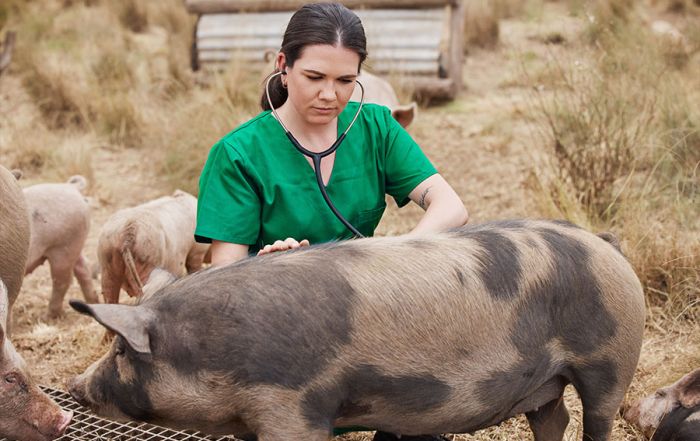Navigating the Latest Listeria Outbreak
I am starting to feel like a member of the Bad News Bears, the guy that is always focused on the negative. You might recall from one of my January blog posts that we had a few E. Coli outbreaks across the United States in late-December. Now, we seem to have started off the year strong – and not necessarily in a good way. In January, CDC was dealing with a Salmonella outbreak that impacted 22 states and now we have a Listeria monocytogenes outbreak in the news, which has impacted 11 states, leaving 26 ill, 23 of them hospitalized, and two dead (as of early-February).
As health officials work to contain the outbreak, it’s important for consumers and foodservice operators to stay informed about the risks associated with Listeria contamination and take steps to safeguard their health, their employee’s health, and their customer’s health.
We’ve touched on Listeria in previous blog posts, but given the scope and severity of the outbreak, I thought it might be good to dig a bit more into Listeria.
A challenge with Listeria monocytogenes is that it can survive and grow in various environments, including refrigerated foods, making it a significant concern for food safety. Unlike other foodborne pathogens, Listeria can thrive at low temperatures, allowing it to persist in refrigerated and ready-to-eat foods.
Listeriosis impacts around 1,600 people each year, and results in death in approximately 16% of those infected. It is the third leading cause of death from foodborne illnesses.
Listeria is commonly found in soil, water, and some animals, and when an individual consumes the bacterium, the resulting infection is Listeriosis. Listeriosis impacts around 1,600 people each year, and results in death in approximately 16% of those infected. It is the third leading cause of death from foodborne illnesses. It is one of the reasons pregnant women are advised to not eat raw sprouts, unpasteurized dairy products, and ready-to-eat foods such as pre-packaged salads, deli meats, hot dogs, and soft cheeses.
Listeriosis can result in flu-like symptoms, including fever, muscle aches, nausea, and diarrhea. In severe cases, more serious complications, such as meningitis, septicemia, and miscarriage in pregnant women can result. Around 90% of those who develop listeriosis are either individuals with weakened immune systems, pregnant women or their newborns, or the elderly. According to the World Health Organization, pregnant women are 20 times more likely to contact listeriosis than other healthy adults.
The current Listeria outbreak has been linked to contaminated Queso Fresco and Cotija Cheese distributed nationwide under multiple brand names. Given the incubation period is generally between one and two weeks, but can be as long as 90 days, the potential for increasing infections is great.
To reduce the risk of Listeria contamination and illness, you can take several proactive measures:
- Be Mindful of Recall Notices and Act Quickly: Suppliers are great at alerting their customers to these recalls, but if you purchased a product at a local supermarket or Wholesale Club, you may not have been made aware of the recall. You can subscribe to online updates for recalls; but however, if you do it, stay up to date on these. Check product labels and expiration dates to ensure that any recalled items are promptly discarded or returned to the place of purchase. If you haven’t been made aware of the current (as of Feb. 5, 2024) recall to which I am referring, you can view it online.
- Practice Proper Food Handling: Follow safe food handling practices to minimize the risk of contamination. Once Listeria is in a business, it is difficult to fully remove. Encourage employees to routinely and thoroughly wash their hands, and be sure to clean and sanitize utensils, and surfaces before and after preparing food.
- Cook Foods Thoroughly: Cook meats, poultry, and seafood to the appropriate internal temperatures to kill harmful bacteria, including Listeria. Use a food thermometer to verify that foods reach the recommended temperature for safety. Be sure to reinforce proper cooking temperatures with your employees – and feel free to use our free Temperature Chart for Food Safety resource in your operation.
- Be Cautious with High-Risk Foods: Exercise caution when consuming high-risk foods that are more susceptible to Listeria contamination, such as deli meats, unpasteurized dairy products, and pre-packaged salads. Consider heating these foods before consumption to reduce the risk of Listeria infection.
- Seek Medical Attention if Symptoms Arise: If you experience symptoms of Listeria infection, such as fever, muscle aches, or gastrointestinal discomfort, seek medical attention promptly – especially if you have consumed one of the recalled products. Early diagnosis and treatment can help prevent the progression of the illness and reduce the risk of complications.
The bottom line for operators and consumers alike is to remain vigilant and be proactive in protecting your business and yourselves from any outbreak – including the current Listeria outbreak. You can’t operate your business in the dark, stay informed and updated. Practice and reinforce the good food safety practices you’ve always followed and depend on the culture of food safety that you’ve been developing at your business. Risk Nothing.
Never Did I Ever…
Yes, I know the real game is “never have I ever”, but that phrase didn’t work [...]
Understanding Food Contamination in Foodservice Operations
Within this blog, I’ve provided a lot of details about the finer points of food safety [...]
The Antibiotic Debate in Our Food Chain
The discovery of antibiotics in medical science is regarded as one of the most important medical [...]
Exposing the Risks of Raw Milk
When I began my career in the food safety area several years ago, I never dreamed [...]









